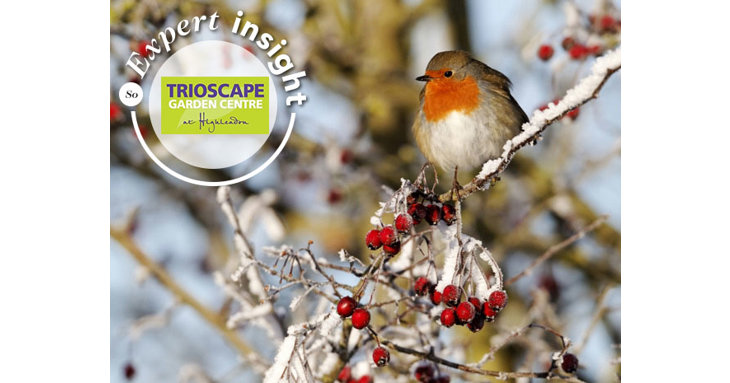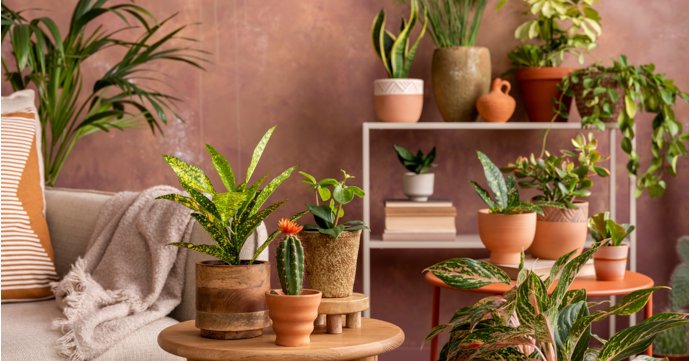With autumn drawing to a close, it’s time to get your garden ready for the arrival of winter – heralding a new season that still offers gardeners plenty of things do with their outside space once the temperature drops.
The expert team at Trioscape Garden Centre in Newent have plenty of tips for what to do in your garden during December, January and February, with advice for amateur and seasoned gardeners alike.
If you need to stock up on bulbs, plants, accessories or tools, the independent Forest of Dean garden centre has all your horticultural needs covered.
December
Planting
Harvest holly with berries for making Christmas garlands and wreaths; stand them in a bucket of water until you’re ready to use them.
Protect your poinsettias from cold draughts and allow them to dry out slightly between waterings to make them last for the whole Christmas period and well into January.
Take root cuttings of oriental poppies and grow them on in cold frames, and take hardwood cuttings from suitable trees and shrubs.
Plant up winter containers with hardy cyclamen, ivy, skimmia and evergreen grasses such as Carex to add colour to your garden. Place them in prominent places beside entrances and well used paths to enjoy their winter display.
Plant some shrubs for winter interest. Sarcococca confusa adds colour and fragrance to your garden at this time of year.
If you still haven’t planted your tulip bulbs there is still time, provided the ground isn’t frozen.
Grow your own
Lift the last of your leeks and parsnips before the soil becomes frozen, and heel them into a trench beside a convenient path. They will keep well for several months like this and can be easily brought indoors when required.
Lift and divide established clumps of rhubarb to renew the plant’s vigour. Sections taken from the outside of the plant are better than those from the centre.
Remove yellowing leaves from your winter brassicas as they are no use to the plant and may harbour pests and diseases.
If you haven’t already, cut down dead asparagus foliage and the top growth of Jerusalem artichokes. Order your asparagus crowns now for planting in spring.
In the greenhouse
If you haven’t already done so, clean out the greenhouse thoroughly. Wash the glass, the floor and the staging with horticultural disinfectant to kill any overwintering pests and diseases.
Brush heavy snow off the tops of greenhouses to prevent the glass being damaged.
Insulate outdoor taps or turn them off at the mains. Also pack away hoses that are not required.
Ventilate the greenhouse on warmer days to reduce humidity and the risk of disease.
Maintenance
Start to winter-prune your wisteria, cutting back summer side-shoots to two or three buds.
Prune climbing roses now; cutting away diseased or damaged growth and tying in any new shoots to their support, and prune older flowered side shoots back by two thirds of their length.
Prune Japanese maples (Acers) and vines now if needed, as they will bleed sap if pruning is done any later.
Leave the faded flower heads on your hydrangeas until the spring, as they will provide frost protection to the swelling buds further down the stems.
Gather up fallen leaves from around the base of rose bushes which suffered from blackspot or rust this summer, to reduce the chance of infection next year.
Move containers of shrubs or bedding plants to a sheltered spot; clustering them together helps protect the root systems from suffering frost damage.
Wash down all of your garden tools and give them a wipe of linseed oil on the wooden and metal areas to help prevent rusting.
Choose a dry day to clear out the garden shed in preparation for the spring. Wash and disinfect bird feeders and bird tables. Clean out bird baths too. Hang fat balls and keep bird feeders topped up to attract birds, which will in turn eat pests in your garden.
January
Planting
Bare root roses can be planted out now and keep up with dead heading winter bedding such as pansies and violas.
Grow your own
Potatoes can be grown in containers under cover for an early crop e.g. Charlotte planters. Potato planters are a great way of growing potatoes in small spaces but keep inside in case of frosts as the foliage may be killed.
It’s also time to start planning your vegetable patch and leeks, lettuce and onions can all be sown now under cover. Parsnips and leeks can be harvested now.
Apple and pear trees can be pruned now if not already done, and fruit bushes such as blackcurrant and gooseberries can also be pruned.
In the greenhouse
Once your greenhouse has been thoroughly cleaned you can start sowing hardy annuals such as sweet peas and cosmos and half hardy annuals such as lobelia, antirrhinum and petunias.
Maintenance
Prune wisteria, cutting back summer side shoots to two or three buds, and prune rose bushes back to just above a bud whilst dormant.
Old foliage on ornamental grasses can be clipped back to a few centimetres above the ground, while old stems of perennials can be cut back avoiding any new growth.
February
Planting
Plant lily and allium bulbs, which will offer welcome bursts of colour from spring to mid-summer.
Grow your own
Rhubarb crowns can be planted now.
When sowing seeds don’t grow too many as they can get leggy – seeds sown later will catch up anyway.
In the greenhouse
Prepare vegetable seed beds – remove weeds and add plenty of compost. Once done, cover with black plastic sheets to keep drier and warmer before planting.
Maintenance
Prune summer-flowering clematis ahead of active growth starting, and prune winter-flowering jasmine after flowering to encourage new growth for next year’s blooms.
If you want to move deciduous trees or shrubs now is the time to do so.
For more information, see Trioscape Garden Centre, call (01452) 790550, email gardencentre@trioscape.co.uk or visit trioscape.co.uk directly.





















